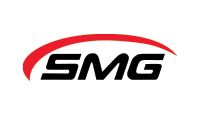Environmental Management & Engineering
SMG helps clients address requirements that come from the materials they use, the waste they generate and the effect their operations have on the environment. We have years of experience in air, waste, and water permitting, as well as environmental management and planning services.
1/Phase I Assessment and Compliance Auditing
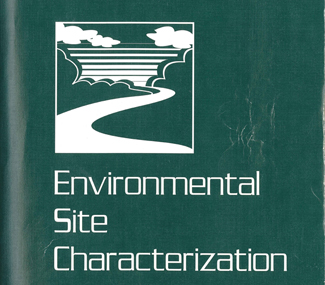
PROBLEM
A multi-state metal manufacturing company needed Phase I audits of each of their 15 manufacturing facilities for a bankruptcy work out through an international banking entity.
SMG'S APPROACH
SMG performed a Phase I environmental site assessment using ASTM Standard 1527-05 as a guideline. SMG evaluated the 15 metal fabrication facilities located in 14 separate states during a one-month period of time. The work entailed a site visit, site interviews, review of state regulatory agency file information and evaluation of federal environmental databases. SMG prepared appropriate reports to meet the requirements of the client and enable the transaction to be completed.
RESULTS
SMG identified potential environmental liabilities that were considered to be material and established budget costs to address the liabilities identified.
2/US Army Corps of Engineers Permitting/Permission to Construct
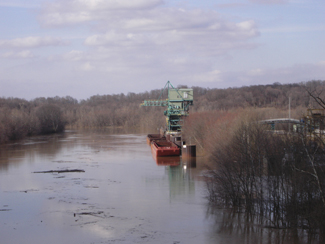
PROBLEM
A large energy facility was planning to construct along a river and build a barge facility, water discharge and water intake structure. Additionally, due to the facility’s placement on previously mined and reclaimed land, there were some small stream or wetland areas that might be impacted. The client needed a USACE 10/404 Permit.
SMG'S APPROACH
SMG prepared and managed the preparation of USACE Section 10/404 permits for a coal gasification facility with barge unloading operation on the Green River. The process involved application preparation and coordination, wetland delineation, wetland mitigation, river mussel survey, cultural and historic studies, including archaeological deep-testing along the river bank, coordination with state and federal Fish and Wildlife personnel, state 401 water quality certification, state floodplain construction permit and flood modeling, and assistance with source water baseline assessment for KPDES Section 316(b) permit application.
RESULTS
SMG scheduled each of the contributing studies and consultations, managed the associated public notices, worked with the Corps permit reviewer and responded to questions raised by the Corps and by public comments. The permit application was approved and the permit to construct issued.
3/Money Saver—Environmental Compliance / Due Diligence
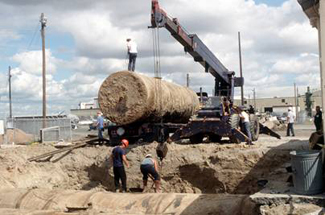
PROBLEM
An out-of-state owner of a large multi-story office building called to get help. The building was being refinanced and the lender’s due diligence requirements included an environmental compliance assessment. The multi-million dollar loan closing was only a week away.
SMG'S APPROACH
During the due diligence investigation, lingering underground storage tank issues from a previous environmental clean-up were found. The site had not been properly closed. SMG conducted research of 10 years worth of site records, negotiated with state regulators, conducted field investigations, obtained a satisfactory closure and met the closing deadline.
RESULTS
The successful resolution of the compliance issue within the short time frame allowed the client to complete the re-financing on time and with a significant reduction in cost and expenditures.
4/Site Remediation — Historic Petroleum Contamination
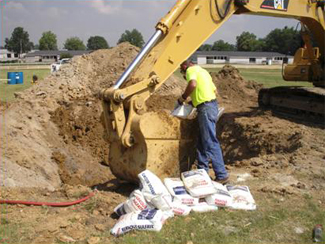
PROBLEM
A site in Louisville, Kentucky had petroleum contamination dating back decades. Traditional techniques hadn’t solved the problem. The site was within an operating public facility and needed to be closed quickly and efficiently.
SMG'S APPROACH
Knowing the history of the site and the frustration of the client, SMG evaluated multiple technologies for chemical and biological degradation. SMG worked with the technology vendor to use soil mixing and hydrogen peroxide to remediate the remaining petroleum release.
RESULTS
SMG was able to achieve a status of no further action at the site within five months from the application. The client was finally through with years of frustration and had a closed site.
5/NEPA Analysis — FHWA Road Project in Gallipolis, OH
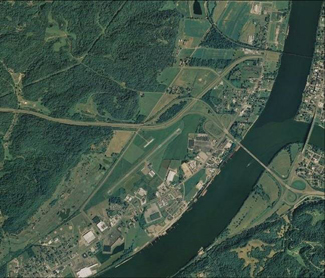
PROBLEM
A small community on the Ohio River had a major employer threatening to leave due to lack of road access during periodic flooding. A new road was proposed, but required a review under the National Environmental Policy Act to confirm there would be no significant impact before the community could receive grant money and construction approval from the Ohio Department of Transportation and U.S. Federal Highway Administration.
SMG'S APPROACH
The community had no expertise in NEPA review and did not even understand what was required. SMG was engaged to evaluate the project impact and performed all site evaluations including phase I environmental site assessment, threatened and endangered species evaluation, wetlands survey, noise analysis, socioeconomic assessment, cultural and historic assessment, project need and alternatives review. SMG prepared all required environmental documents for review and approval by state and federal agencies.
RESULTS
After performing the NEPA analysis and working with all stakeholders, both federal and state agencies approved the project as a Level 4 Categorical Exclusion and issued a finding of no significant impact. The new road was constructed and helped save community jobs.
6/ISO 14001

PROBLEM
A Tier I automotive supplier had to implement ISO 14001 at its facility as a condition of its contract with the auto manufacturer.
SMG'S APPROACH
SMG provided initial ISO 14001 training to management and team leaders and emphasized the importance of management buy-in and whole company support. To help the company develop and own their process, SMG provided Environmental Management System planning assistance as the policies and procedures were documented. Following implementation, SMG performed routine compliance auditing and EMS auditing services to help confirm the system was working.
RESULTS
SMG identified potential environmental liabilities that were considered to be material and established budget costs to address the liabilities identified.
7/Phase II and Remediation—Brownfields Redevelopment
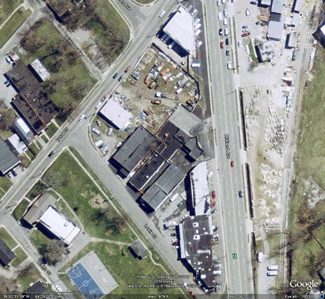
PROBLEM
A non-profit community development agency needed to purchase a property that had historic contamination identified on site.
SMG'S APPROACH
SMG evaluated the property by identifying potential and actual environmental liabilities and options for development. We then quantified site impacts (including soil impact with chlorinated solvents and toxic metals); developed risk based remediation and development alternatives, and managed the site remediation in accordance with state approved plans.
RESULTS
Following the remediation and interface with the state, SMG obtained a risk based closure from the state which allowed the agency to proceed with their plans for the site.
8/Environmental Risk Management Compliance Auditing

PROBLEM
A regional coal mining and processing company was under an agreed order with EPA to audit compliance at some of its facilities. They also wanted to know how the rest of their mines were performing on environmental issues across the company.
SMG'S APPROACH
SMG performed an environmental compliance audit of coal mining operations from 19 operating groups in 4 states that evaluated over 100 mine permits. The work entailed a site visit, site interviews, and review of facility inspection history and on site records. Portions of the work were completed as part of a formal consent order within a period of three months.
RESULTS
Compliance status was identified for each operating group for specific items audited as well as across the entire corporation and presented in a manner that enabled corporate and regulatory officials to readily determine areas to focus resources to improve compliance. The company has used the opportunity to periodically revisit each facility’s compliance status.
9/Air Permitting — Keeping a New Energy project out of PSD Permitting

PROBLEM
A new renewable energy facility was planned to use biomass on a small scale to create electricity. The plan was to stay below the thresholds for “Prevention of Significant Deterioration” permitting that would lengthen the permit time frame dramatically. The project had to be on line in less than 3 years.
SMG'S APPROACH
SMG reviewed air permitting options with the client to determine the best approach. SMG worked with the project design engineers to develop a permit application that would enable the facility to be permitted as a synthetic minor permit, enabling the project to achieve final permits much earlier than predicted. SMG’s relationship with the regulators and proactive management of the permitting process saved time and money for the client.
RESULTS
The permit went through significant revisions with the active engagement of SMG with the regulators. A draft permit was issued within two weeks of notice of a substantially complete application. The project is on schedule to reach its goals.
10/Anti-Degradation Alternative Analysis

PROBLEM
A client wanted to renew their NPDES wastewater discharge permit and was asked to do a Socioeconomic Demonstration and Alternatives Analysis (SDAA) (previously known as a high quality alternatives analysis (HQAA)), also known as an “anti-degradation analysis”. Not knowing what to do, they contacted SMG for help.
SMG'S APPROACH
The SDAA is designed to protect high quality waters within the state by preventing additional pollution from harming existing water quality conditions, while not prohibiting essential economic and social development in the region. SMG analyzed alternative and enhanced treatment technologies and source reduction strategies at the project location, and analyzed the project’s impact on both social and economic factors in the region. SMG was able to show that abandonment of the project would result in a significant impact on the socioeconomic development of the region.
RESULTS
The client was approved to continue development of their business with no changes to their operation or other detrimental permit restrictions.
11/Water Resources Management — FEMA Map Revision, Lexington, KY
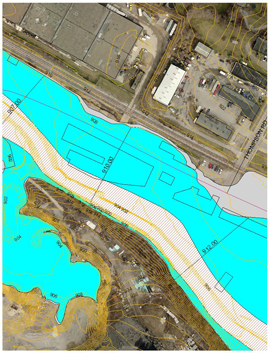
PROBLEM
Existing buildings on a Brownfield redevelopment site are located in the floodway boundary, preventing the developer from obtaining a construction permit in accordance with local floodplain regulations.
SMG'S APPROACH
SMG discovered that the existing floodway boundary and base flood elevations were based on an obsolete FEMA hydraulic model. SMG used HEC-RAS, the latest river hydraulics model offered by FEMA, to verify the current floodway boundary. SMG converted the original HEC-2 model to the current version of HEC-RAS. The river hydraulics were analyzed using HEC-GeoRAS, which is a utility for processing geometric HEC-RAS output data in ArcGIS. Modeling efforts determined that the base flood elevations are lower than indicated by the original HEC-2 model, allowing the extent of the floodway boundary to be reduced. This change made the property eligible for a construction permit.
RESULTS
A Conditional Letter of Map Revision was submitted to FEMA to request the existing flood maps to be updated to depict the adjustments in the floodway boundary. The project is on schedule to begin construction.
12/Green Infrastructure Design, Lexington, Kentucky
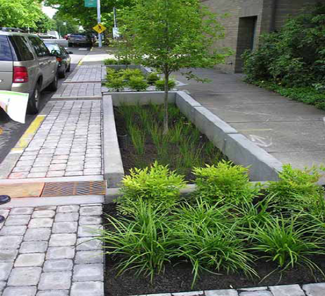
PROBLEM
The owner of a commercial building needs to provide water quality treatment for stormwater runoff from an existing parking lot. The client is interested in using green infrastructure design to provide low maintenance treatment devices without losing many parking spaces.
SMG'S APPROACH
SMG developed a bio-retention cell design that will fit into an eight-foot wide median between rows of parking spaces. This bio-retention cell will have plantings that help to treat pollutants and reduce the volume of stormwater. The plantings are arranged in a manner that enhances the aesthetic environment, giving it the appearance of a landscaping feature rather than a stormwater treatment device.
RESULTS
Preliminary designs have determined that the bio-retention cell will treat stormwater runoff from nearly 40% of the site as well as reduce the total quantity of stormwater that leaves the site. The client has decided to attract attention to their bio-retention cell with a sign describing the utility of the device beyond its aesthetics.
13/NPDES Permitting
PROBLEM
A municipality’s NPDES wastewater discharge permit had restrictive permit limits that were costing the city money in treatment costs. Also, the state’s reasonable potential analysis, prepared during the NPDES permit renewal process, proposed monitoring and limits for additional parameters that the city felt were not justified. Not knowing how to respond, the city contacted SMG for help.
SMG'S APPROACH
SMG determined the basis for the restrictive limits inclusion on the permit. It turned out the limits had been applied based on a regulation that had been since overturned. The state concurred and returned normal secondary treatment limits to the permit.
Next, SMG reviewed the city’s sampling results and compared them with the results of the state’s reasonable potential analysis. SMG found that many of the proposed requirements were based on sampling results from one particular year. A closer look at the data showed inconsistencies, such as effluent sampling results that were significantly higher than influent sampling results. SMG convinced state regulators to agree that the data should be excluded from the analysis. After completing a second reasonable potential analysis using the revised data, the additional monitoring and limits from the proposed permit were removed.
RESULTS
The city no longer had to spend extra money on additional treatment to meet the overly restrictive permit limits. The plant operator could breathe easier knowing that there was a greater margin of error in operating the city’s wastewater treatment plant.
n addition, by proactively challenging proposed permit requirements, the city avoided having additional limits and monitoring added to their NPDES permit and saved money by not having to regularly sample for these parameters.
14/Pretreatment Local Limits
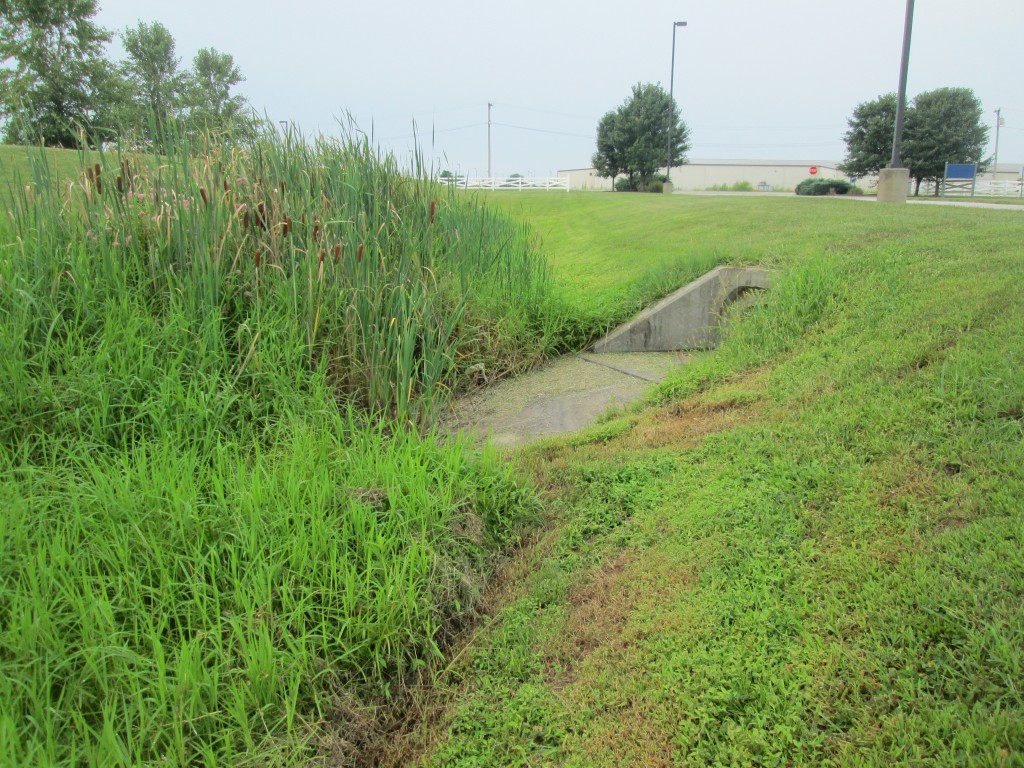
PROBLEM
A city engaged SMG because local industries were complaining about their pretreatment permit limits and the city was not getting economic development inquiries from industry regarding new or expanded operations. Existing local limits appeared to be more stringent than what seemed reasonable.
SMG'S APPROACH
SMG reviewed the city’s Sewer Use Ordinance, influent, effluent, and sludge sampling results, Pretreatment Reports, and the NPDES Permit. In comparing the city’s local limits with other treatment plants’, SMG found:
The city’s limits were more stringent than other comparable plants;
The city’s permit and local limits had not been updated as a result of the closure of a major industry that changed the treatment plant’s industrial loading; and
The city’s treatment plant capacity has been upgraded in the NPDES permit, but this had not been taken into consideration during pretreatment program evaluations.
Based on these factors SMG helped the city re-evaluate their local limits.
RESULTS
SMG re-evaluated and developed technically valid and effective pretreatment local limits. SMG coordinated with city officials and state regulators during the re-evaluation process. As a result, the local limits for many important parameters were made less stringent and several other parameters were removed due to site-specific conditions at the wastewater treatment plant. The city now feels that it can keep its existing industries happy and potentially attract new industry to the area.
